The fires that have devastated more than half of the rainforest on Australia's UN-protected Fraser Island are among many climate change-related factors threatening the world's most treasured natural assets.
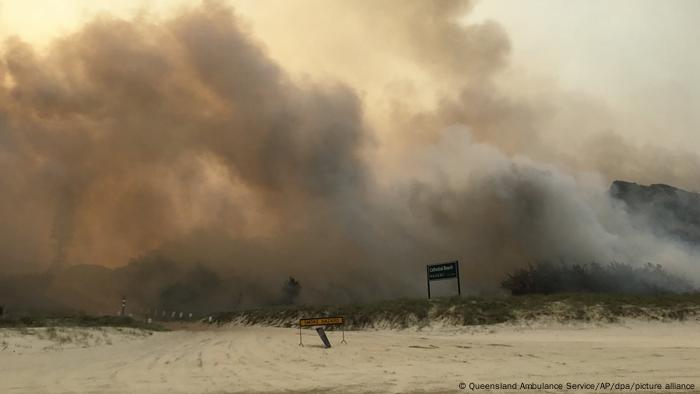
On the small sandy paradise of Fraser Island, or K'gari, off the east coast of Australia, the indigenous Butchulla people have maintained the delicate ecosystem of the rainforest on the sand dunes with controlled fires — known as "cool burns" — for generations.
But there was nothing controlled about the enormous bushfire that began spreading across the island more than seven weeks ago. Believed to have been started by a tourist campfire in October, the blaze reached its peak this weekend when it tore through the island's rainforest and forced many residents to evacuate their homes.
So far, the houses of the island's 200 residents have been spared the flames — but the same cannot be said of the natural landscape on the World Heritage-listed island. Over half the rainforest — 8,500 square kilometers (3,282 square miles) according to dpa news agency — has been destroyed by the fires.
The devastation comes at the beginning of Australia's wildfire period. Last year, in what became known as "Black Summer,” some of the most deadly and widespread fires the country has ever witnessed killed 1.25 billion animals according to conservation organization, World Wildlife Fund (WWF), burned houses to the ground and destroyed hundreds of thousands of square kilometers of bush.

On Fraser Island, the rainforest grows on sand dunes
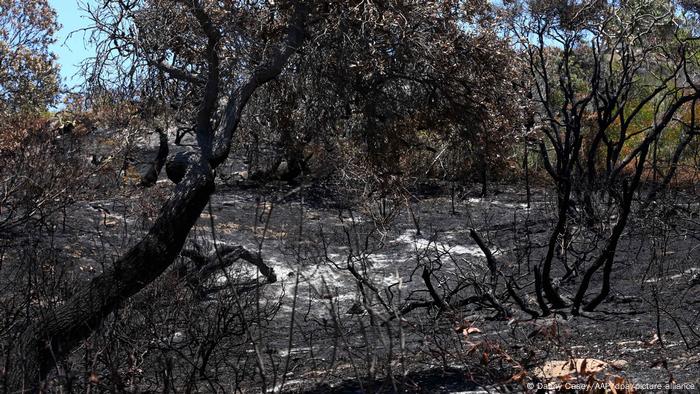
The fire has left much of the rainforest destroyed
"Fire seasons are lengthening worldwide, and we know that in Australia our fire seasons are starting earlier and finishing later, with more dangerous fire days occurring earlier in the season than they have previously," Richard Thornton, CEO of the Melboure-based non-profit Bushfire and Natural Hazards Cooperative Research Center, told DW by email.
"Climate change plays a role in this — Australia is now one degree Celsius warmer compared to the long-term average, which means that the variability of 'normal' events sits on top of that," he added.
UN report blames climate change
The destruction of the island's natural heritage comes as a new UN-backed report names climate change as the top threat to natural World Heritage sites. Researchers found one third of sites on the UNESCO list are now threatened by global heating.
The report — the World Heritage Outlook 3 — was authored by the International Union for the Conservation of Nature (IUCN), a government and civil society group that advises UNESCO, the UN's culture agency.
"Natural World Heritage sites are among the world's most precious places, and we owe it to future generations to protect them," Bruno Oberle, IUCN director general said in a statement.
"As the international community defines new objectives to conserve biodiversity, this report signals the urgency within which we must tackle environmental challenges together at a planetary scale."
Watch video 28:35 After the inferno - The battle to save australia's koalas
Among the threats to 83 of the 252 World Heritage Sites are shrinking glaciers, an increase in the incidence and ferocity of fires, floods and droughts and coral reef bleaching — an impact of ocean acidification, which is caused by high levels of CO2 emissions.
The Great Barrier Reef, which is situated near Fraser Island, was singled out as one of the sites most at risk. The world's largest tropical wetland, the Pantanal Conservation Area in Brazil, was badly damaged by extensive fires in 2019 and 2020, while the melting of the Kaskawulsh Glacier caused by rising temperatures in Canada's territory of Yukon has depleted fish populations in Kluane Lake. A lack of of glacial run-off means large swathes of the lake are drying up.
"The findings of the report point to a dire need for adequate resources to manage our irreplaceable natural areas," said Peter Shadie, Director of IUCN's World Heritage Program in a statement.
According to the study, which is the third following previous assessments in 2014 and 2017, 16 of the nature sites have deteriorated in the last three years. Only eight have improved. Over a third of sites were also assessed as being at risk: 30% were of "significant concern" and 7% are "critical." These include the Great Barrier Reef, the Tropical Rainforest Heritage of Sumatra in Indonesia and the Lake Turkana National Park in Kenya.
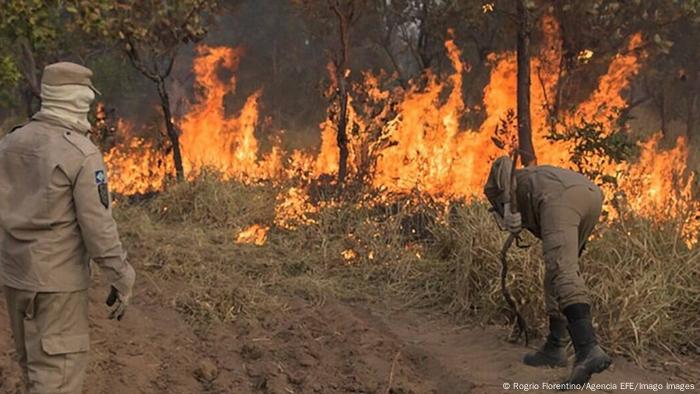
Fires devastated parts of Brazil's Pantanal wetlands earlier this year
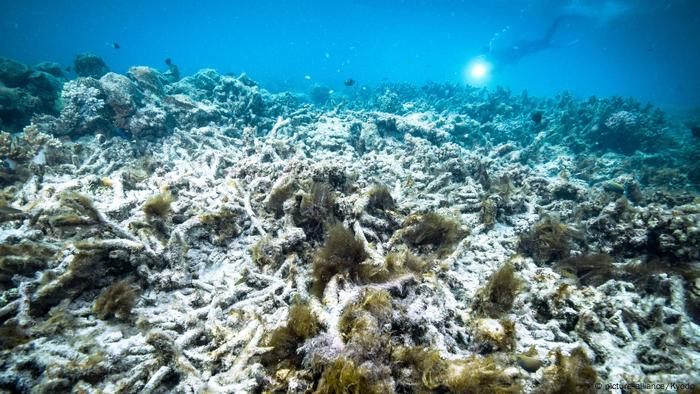
The Great Barrier Reef has lost around half its corals since the 1990s
'Our extremes are more extreme'
Among those sites with a more positive outlook are the Comoe National Park in Ivory Coast which Shadie identifies as an "inspiring example." After concentrated conservation efforts to counter the effects of climate change in the park, populations of chimpanzees, elephants and buffaloes are stable and rare bird populations are on the rise.
For Fraser Island, the opposite may be true. Though the report was published before the current fire started burning, the authors noted that an increase in fires posed the greatest threat to the sandy island.
"Changes in the plant communities (on Fraser Island) may be driven by future climate change and accelerated by the increase in fires," the IUCN report says. "It is felt that modern regimes driven by climate change will result in a decrease in native biodiversity with a possible increase in pyrogenic invasive plant species."
"Our extremes are more extreme — hotter and windier, and when it does rain, it rains more intensely," Australia bushfires expert Richard Thornton explained.
"It is extremely difficult to attribute any one bushfire, flood or cyclone to climate change," he added. "But climate change is changing our underlying weather conditions, and causing more severe weather," he added.
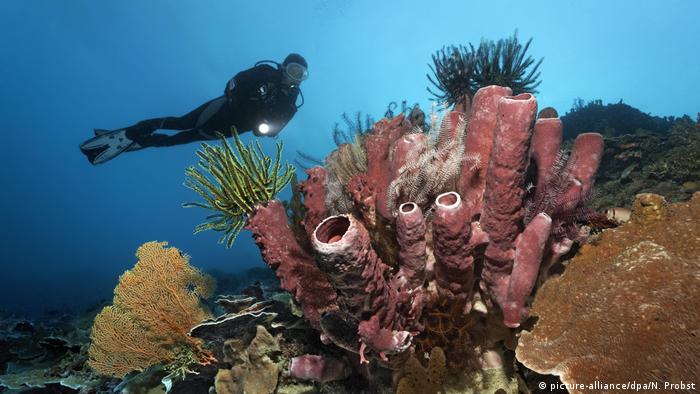
DOOMSDAY TOURISM AND CLIMATE CHANGE: VISITING NATURAL WONDERS BEFORE THEY DISAPPEAR
Transient treasure
Of the 2 million-odd people who visit the Great Barrier Reef annually, a 2016 survey found that 69 percent were coming to see the UNESCO World Heritage site "before it's too late." And no wonder. The IPCC says that even if we manage to limit global warming to 2 degrees Celsius, 99 percent of the world's coral will be wiped out. Tourists can hasten their demise by touching or polluting reefs.
12345678
Date 08.12.2020
Author Elliot Douglas
Related Subjects #DailyDrone - UNESCO World Heritage, Australia, World Heritage, Climate Change, Great Barrier Reef
Keywords Fraser Island, UNESCO, Great Barrier Reef, World Heritage Site, climate change, fires, Australia
Permalink https://p.dw.com/p/3mQbg
No comments:
Post a Comment